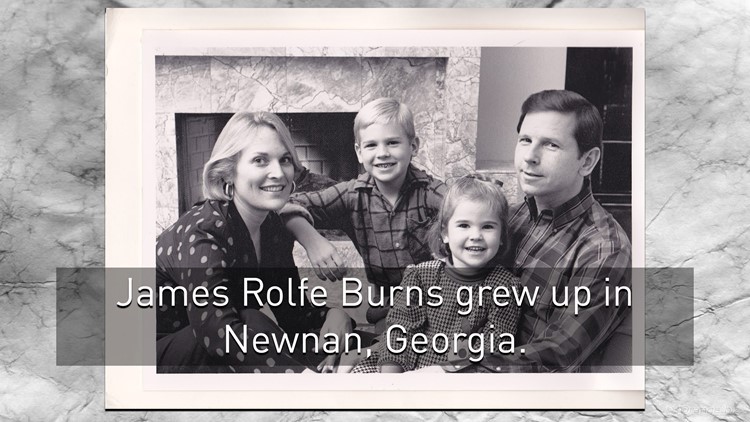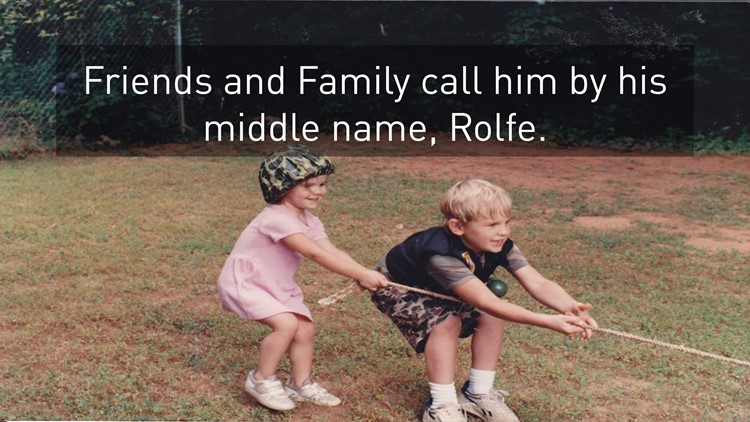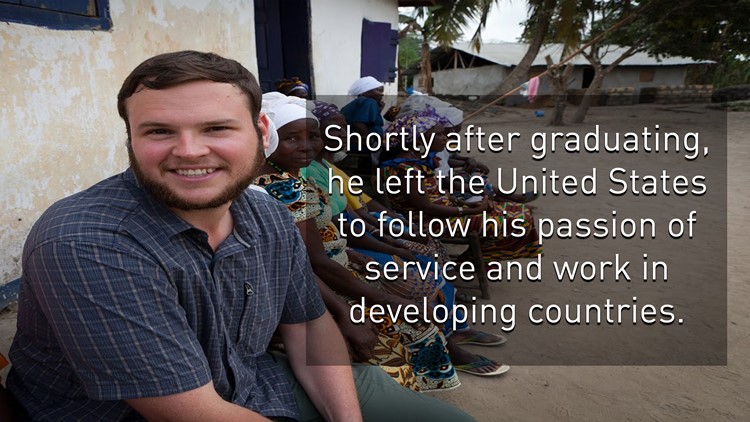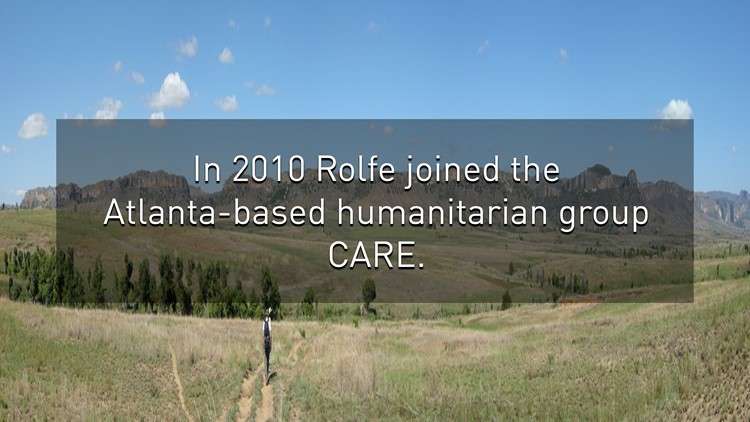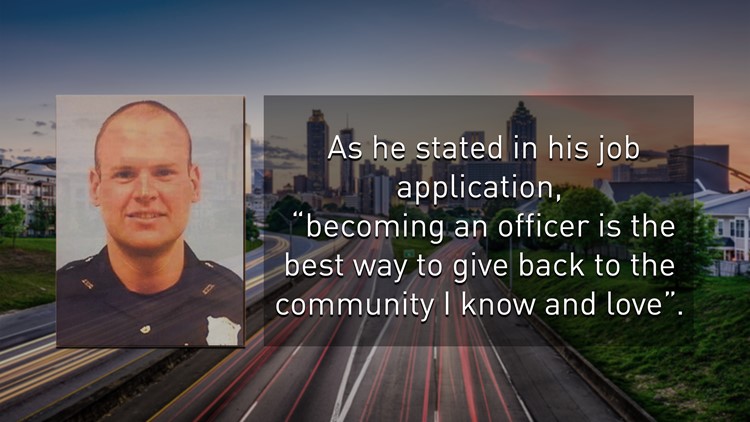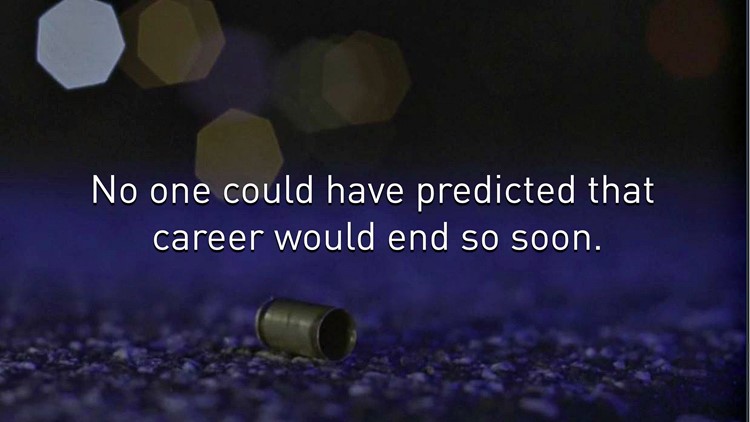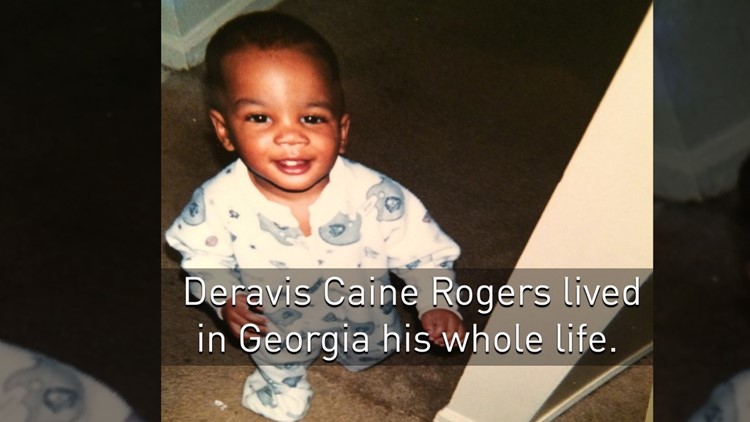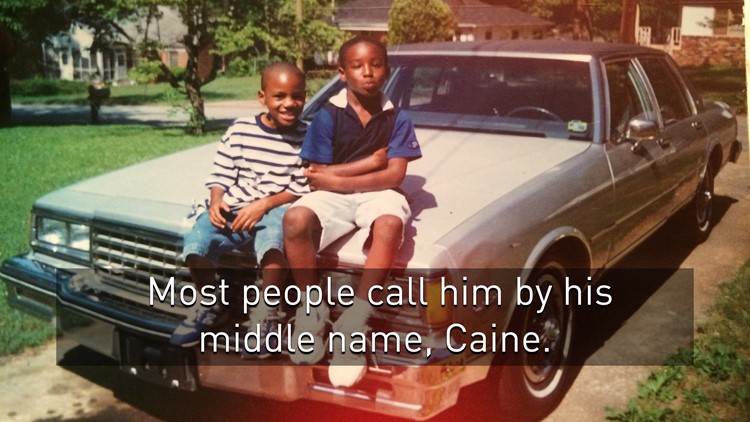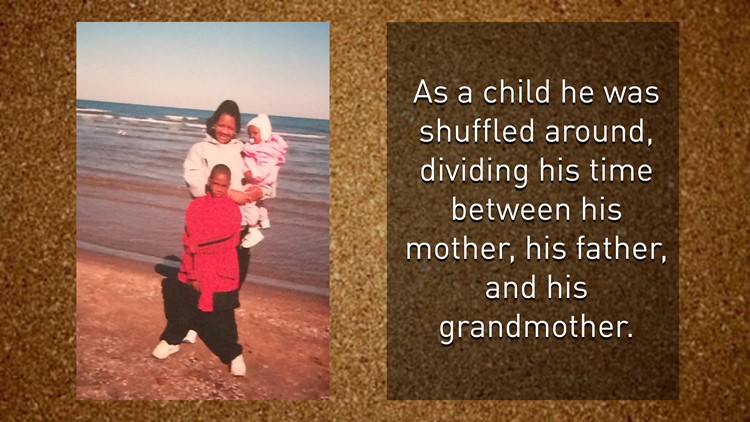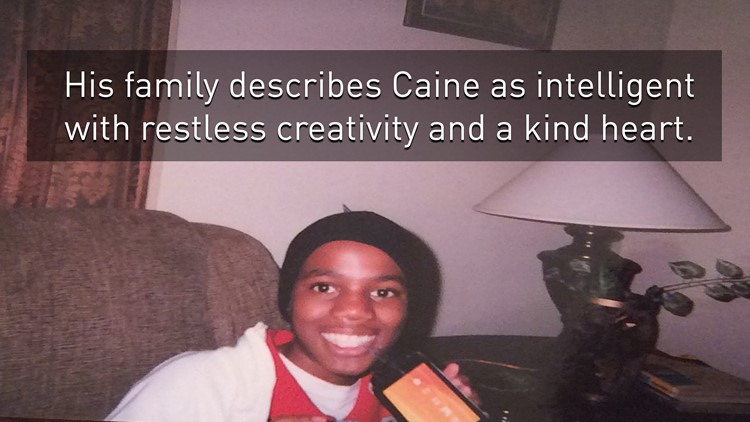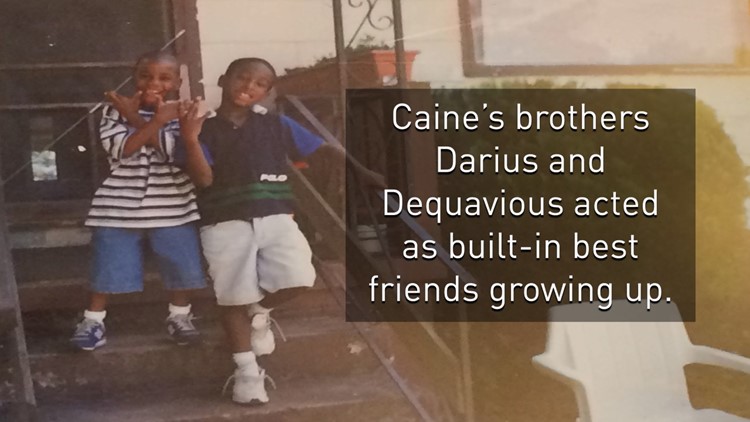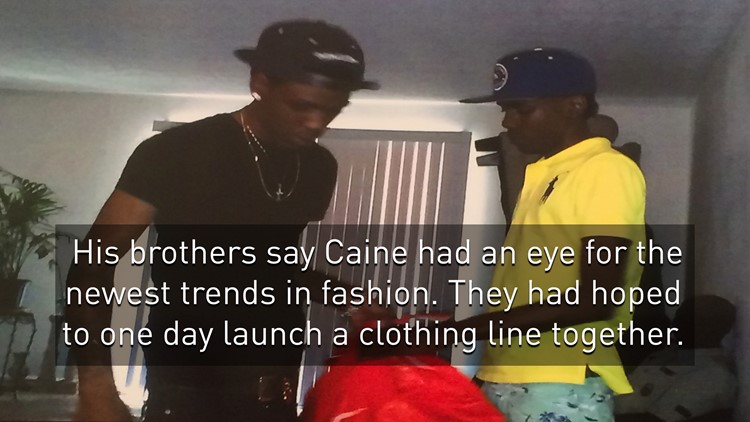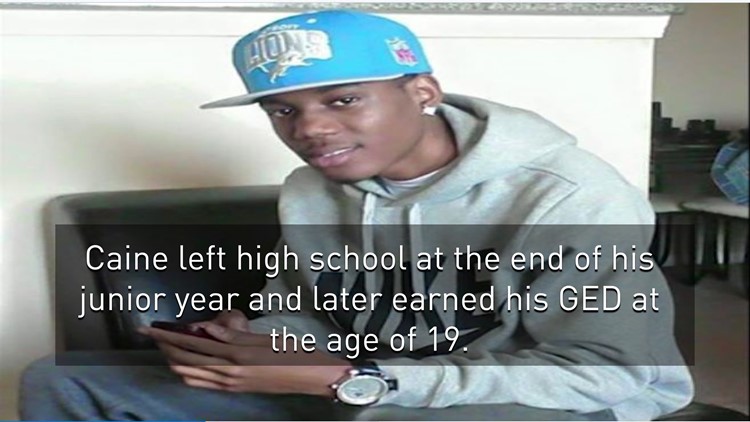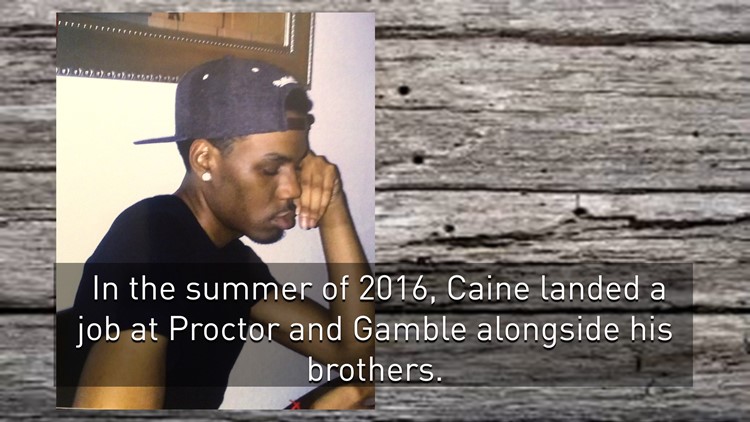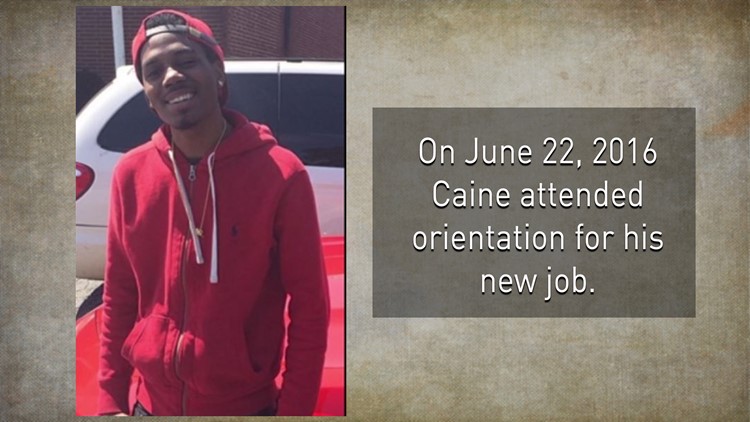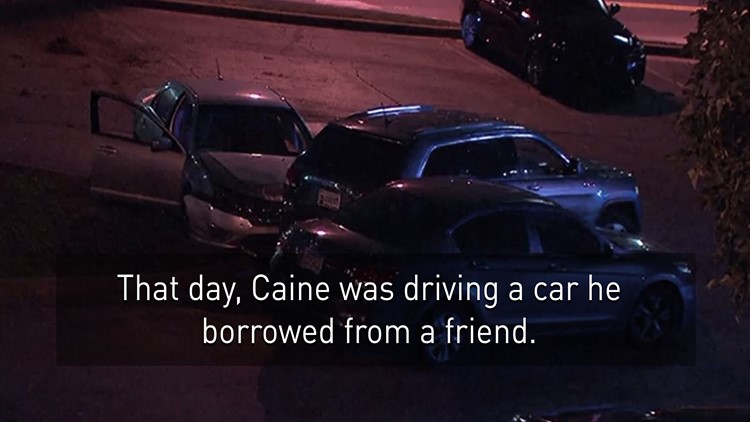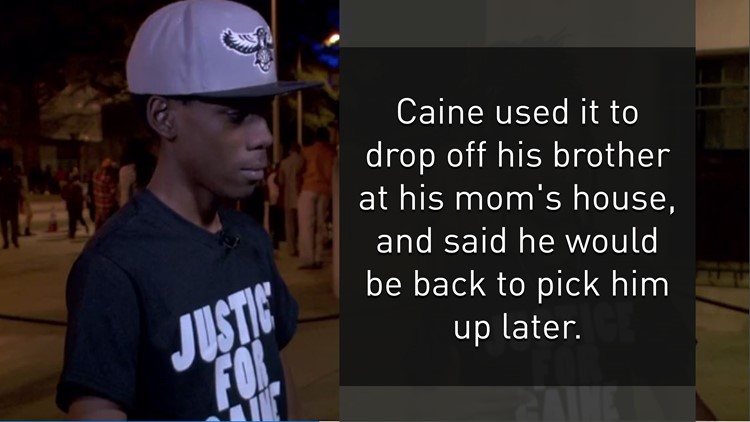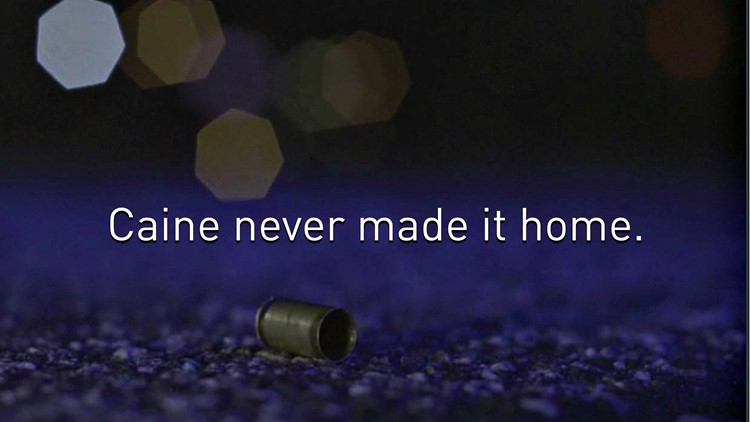Dead of summer on Monroe Drive
On a hot summer night in June, two lives collided. One ended. This is their story.
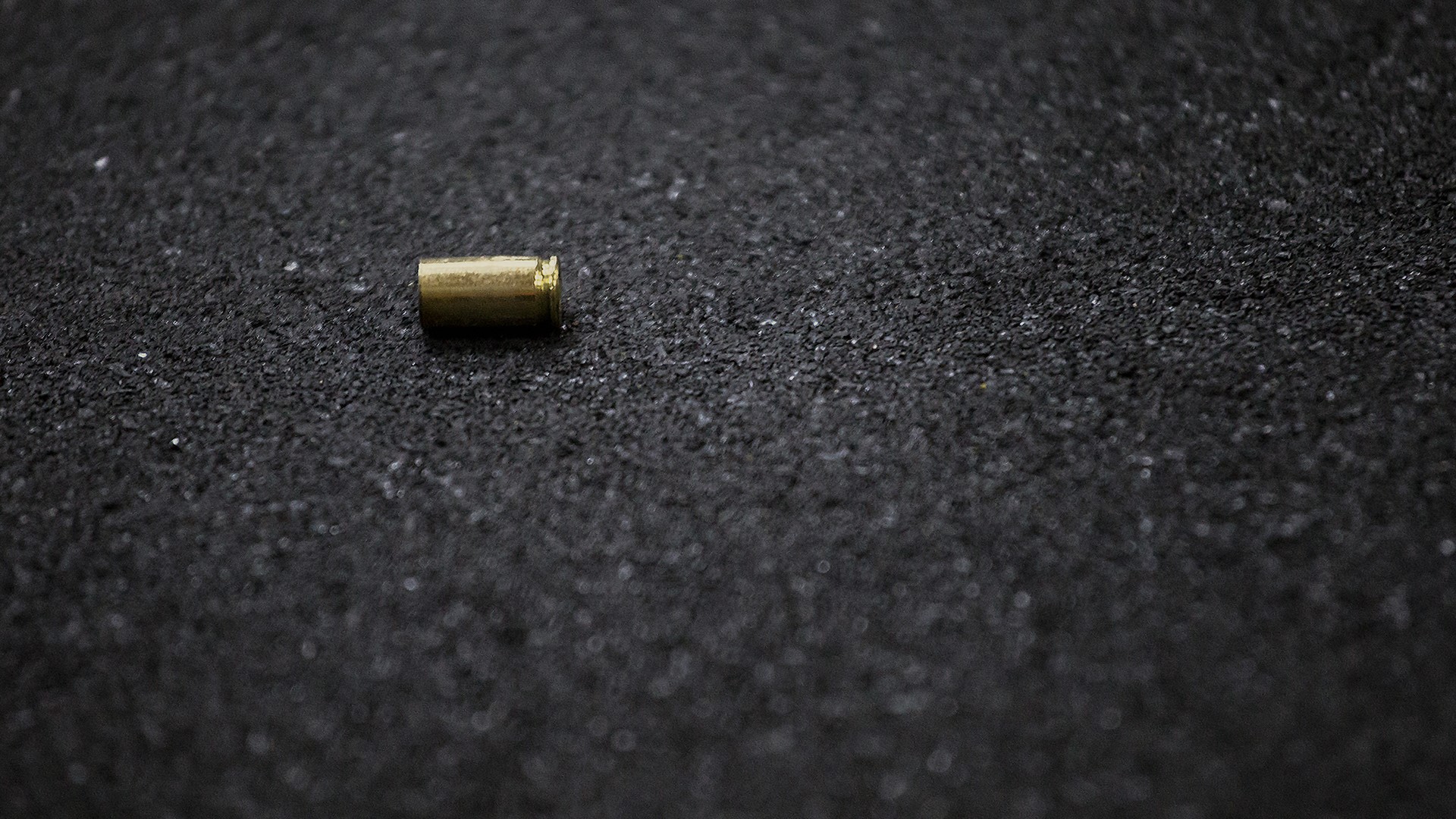
EDITOR'S NOTE: If you are viewing this in our app, click this link to see full story.
The daiquiris had been flowing for hours at Cirque Lounge. The bass of the music thumped while men and women mingled on the outdoor patio perched at the base of Monroe Drive, in Midtown Atlanta. Valet drivers worked to move cars off the busy street, but some decided to skip the line, instead parking across street. The balmy summer weather that Wednesday night had drawn a crowd for Ladies Night.
The 20-somethings playing hard-to-get in the lounge were completely oblivious to an entirely different type of chase going on inside Monroe Place Apartments. The Atlanta Police patrol car pulling into the cul-de-sac went unnoticed. The shouting of an Atlanta police officer went unheard.
That all changed with a single, unmistakable crack of a gunshot.
James Rolfe Burns has deep roots in Georgia.
He grew up in Newnan and attended Woodward Academy. He’s tall and broad, making him a welcome addition to the lacrosse team, but a larger than life presence on the stage production of “Bye, Bye Birdie”. Friends and family call him by his middle name—Rolfe—and are quick to describe him as a gentle giant, loyal and selfless to his core.
Rolfe graduated from the University of Rochester with a degree in economics in 2006. He left the United States to work in developing countries overseas. In 2010, Rolfe joined his mother at Atlanta-based humanitarian group CARE. For the next three years, Rolfe coordinated security for diplomats around the globe.
Before Monroe Dr. | James Rolfe Burns
From earthquake relief in Pakistan and Haiti, to aid missions during the civil war in South Sudan, close friend and former CARE colleague Jenna Hyland describes the work as fulfilling, but dangerous at times.
“There are lots of organizations that are very risk-adverse and they stay out. There are some organizations that are very prone to risk and they go in and Rolfe was that person that was navigating those two boundaries and he did it with such grace, and such poise, and such honest conviction for the work that he did”.
Burns returned to Georgia and applied to the Atlanta Police Department in 2013.
“I was floored,” Hyland said recalling a conversation with Burns.She says Rolfe’s response was simple and direct: “Kiddo, you gotta make a difference here.”
It’s a sentiment echoed in Burns’ APD application essay, writing that “becoming an officer is the best way to give back to the community I know and love.” And “I believe this department is ideal for me to begin my career in law enforcement.”
No one could have predicted that career would end so soon.
Deravis Caine Rogers called Atlanta home for 22 years.
He was Melva Rogers’ first born son and the first grandson in the family. Most people call him by his middle name, Caine. As a child, Caine was shuttled around the metro Atlanta area, dividing his time between his mother, grandmother and father, Deravis Thomas.
His father remembers how, as a toddler, Caine would walk around with a newspaper folded up under his arm.
“[H]e was a little business man," Thomas said. "He’d come set it down, fold it out, and I would just watch him.”
Family describes Caine as intelligent, with restless creativity, and a kind heart.
Before Monroe Dr. | Devaris Caine Rogers
“When he was about seven years old, he got in trouble at school,” his mother Melva explained while sifting through a pile of papers. She pulled out a poem, written in a child’s scrawl. It read: “Roses are red. Violets are blue. Sorry for embarrassing you.” The words ‘violets’ and ‘embarrassing’ are misspelled.
“It was the best he could do,” Melva said. “Bless his heart, my baby”.
Caine had built-in best friends in his brothers, Darius Mickens and Dequavious Chandler. The three shared a tub as toddlers, summers at Six Flags and a love for the Atlanta Hawks. They say Caine had an eye for the newest trends in fashion, in both design and style.
“Caine, you know, he just showed us the swag”, Darius says. “He always said I took his swag”. Darius is wearing a pair of shoes gifted by his brother. “I guess it’s true.”
Caine’s passion also brought the brothers together around a common goal of one day launching their own clothing line. Caine came up with the name “KASH”, which stands for “Keep A Steady Hustle”.
Melva says Caine was involved in activities like the marching band during his time at Washington High School. He left school at the end of his junior year and later earned his GED at age 19.
By 2016, Caine’s parents were pressing him to get his life back on track. He was 22 years old, but had run into some trouble with the law after high school. His family says the incidents were minor, and they urged Caine to move beyond it.
“He owned it. It was enough to make him know that this isn’t the path for me”, Deravis said of his son. “He was striving to do better”.
Caine landed a job as a clerk at Proctor and Gamble, where he would be working along side his brothers. All three men agreed this job was a stepping-stone.
On Wednesday, June 22, 2016 Caine went to orientation for his new job. He got a hair cut with his brother, Darius, who says he remembers Caine wearing a burgundy shirt and either black or khaki jeans. Caine dropped Darius off at their mom’s house, and told him he would be back later to pick him up. He drove off in a car that he borrowed from a friend.
Caine was on Monroe Place when the shot was fired that Wednesday night.
He never made it back to his mother’s house.
That shot was fired during tense times.
Chassity Clark was inside Cirque Lounge with friends when the chaos started.
“It was just like commotion and yelling and people everywhere scattering," she recalls. The panic set in quickly. The worst mass shooting in U.S. history occurred just ten days prior; the murder of 49 club-goers at Pulse Nightclub in Orlando was still fresh on people's minds.
Her friends initially tried to take cover under the table, but Chassity knew there was no point in hiding. They needed to get out. After a brief moment of panic when they were separated, Chassity met up with her girlfriends outside. They retrieved their keys from the valet and were told they could get the car from the lot.
“That’s when we walked around back and people said he’s dead, he’s already dead.”
“5-9 right away”.
The request for back-up call went out over the Atlanta Police radio at 11:52 pm the night of the fatal shooting.
It came from Nathaniel Grigsby, an off-duty APD officer patrolling the Monroe Place Apartments. Grigsby said he was in “a foot chase in a parking deck with a black male subject dressed in [a] red shirt and black jacket," according to an APD Internal Affairs Memorandum.
Multiple units acknowledge the call. The memorandum shows a sergeant asks what the suspect was wanted for, but gets no response. The silence prompts a new call.
Signal 63: Officer Needs Assistance
Officer James Burns was at the Zone 2 precinct uploading dashcam video from the day’s shift when Grigsby’s call went out. Although his time on the clock was coming to a close, he responded with lights and sirens and made his way to the scene.
Burns arrives within minutes. He alerts dispatch that he’s on the scene and requests a signal 67 to hold radio traffic “until we know more”. No one had heard from Grigsby since his original call nearly six minutes prior. At this point, Burns is working off a vague description of a man possibly wearing a red shirt and black jacket, whose alleged crime is still unknown.
According to that APD memorandum, Burns cuts off his lights and sirens as he prepares to make the right turn onto Monroe Place. He hugs the left side of the street as he drives up the cul-de-sac. To his right, Burns sees a car parked in the wrong direction, begin to pull out and head in his direction. He angles his patrol vehicle in an attempt to block the driver’s path, flips on his lights and chirps his siren, but the car continues forward. Burns jumps out of the patrol vehicle, orders the driver to stop, but still the car continues forward.
"I heard shots fired."
Over the radio, a sergeant asks if Grigsby is ok. “I’m okay,” Grigsby says. “I heard shots fired.”
This time, it’s Burns who responds, confirming he fired the shot, saying the driver tried to run him over.
The bullet entered through the front passenger window, but the car did not stop moving. Instead it coasted through the intersection at Monroe Drive, the momentum carrying the car up the curb and over a grassy embankment into the valet lot behind Cirque Lounge, eventually crashing into a parked Jeep.
The driver, Caine Rogers, had been shot in the head.
He later died at Grady Memorial Hospital.
6 minutes that shatter two families
Only six minutes pass between Grigsby’s initial call for help and the moment Burns fired the fatal shot. The deadly confrontation opened an investigation stretching back years, covering both men’s lives
Two weeks after the shooting, Rolfe Burns was fired from the Atlanta Police Department.
Video evidence was collected from the scene, but APD isn’t releasing it due to the ongoing investigation. It’s evidence that played a major roll in the department’s decision to fire Officer Burns. According to documents obtained from APD, Burns’ account of the events during his interrogation differed from both radio traffic and dash cam video from that night.
In a June 29th interrogation, Burns recalls seeing a car pull away from the curb and head down the street.
“How did you know he was the one?” asks the investigator with APD’s Office of Professional Standards.
“I didn’t,” Burns says. “He was the one trying to run me over.”
Burns says the car was coming straight toward him, and that he used his patrol vehicle to block the car’s path. Burns then exited the patrol car.
“I yell, ‘Stop, stop.’ And he doesn’t stop… Instead, he guns it… he was trying to kill me,” Burns says, according to the transcript. “As the car comes by, I finally can squeeze the round off… As I take the shot, he’s still accelerating.”
The APD’s Office of Professional Standards report contradicts those statements.
The report concluded that Rogers’ car was not accelerating, but that Burns was standing behind his patrol vehicle and not directly exposed to the oncoming car.
While Burns says he aimed to shoot through the windshield, the evidence shows that he shot into the passenger side window.
Dash cam video from another officer’s vehicle shows Rogers’ car coasting down the street, and Burns walking calmly behind it, according to the investigator who interviewed Burns.
On July 15, 2016, the Fulton County District Attorney issued warrants for Burns’ arrest.
Burns turned himself in the following day.
On August 31, a grand jury indicted Burns on charges of aggravated assault, felony murder, making false statements and violations of oath of office.
“It became apparent that the officer did not know anything about the person in the car. And without knowing any specific facts, he made a decision that ended up being exactly the wrong decision.” said District Attorney Paul Howard following the indictment.
But according to Burns’ attorney, Drew Findling, the dash cam video used to indict his client lacks context.
In February, just four months prior to the shooting, Officer Burns was nearly run over during a traffic stop. The driver in that case is now facing aggravated assault charges after dragging Burns nearly 68 feet while attempting to flee. The case is still pending in Fulton County court.
“What is the weapon in that case? The weapon is a motor vehicle. So for there to be claims that officer Burns was not threatened by a dangerous weapon [in the Monroe Place case] is just disingenuous at best,” Findling asserts.
When asked if the February incident could have influenced Burns’ decision to pull the trigger on Monroe Place, Findling says, “the vehicle was a deadly weapon there, it certainly can be a deadly weapon here [in the Monroe Place case]”.
Findling also maintains that Rogers’ arrest warrant could be a factor in the case, and that he plans to present evidence at trial to support that.
Investigators continue to sift through the facts of the case.
Each detail that’s uncovered opens Caine and Rolfe up to sympathy and scrutiny. But, the court of public opinion can be quick and brutal.
On the night of the shooting, police originally told the media that Officer Burns shot a man trying to break in to cars, but later clarified there was no evidence of a crime.
To Caine’s father, it felt as if police and the public put the blame on Caine: “It’s very hurtful when the initial picture that is painted in a person’s death, that the person is being made to be responsible for their own death. So I was glad that it was cleared up, that he was not a suspect. No one was chasing him.”
Life after Monroe Dr. includes an "undercurrent of pain" for the former officer's family.
In an exclusive interview with 11Alive News, Lindsey Burns, wife of former officer Burns, described a difficult adjustment in the months since the shooting.
“We never really got to be newlyweds,” Lindsey explained through her tears. Lindsey and Rolfe were married just three months prior to the incident.
“We went from getting married to kind of trying to reconcile the fact that his mother had been given this terminal diagnosis and was just months from imminent death,” she said.
Rolfe’s mother had been diagnosed with pancreatic cancer, and was in hospice the night of the shooting. Three days later, Rolfe’s mother passed away. Like the Rogers’ family, the Burns’ were also coping with the loss of a loved one.
“There’s an undercurrent of pain in every day of our lives”, she says. “We think about what happened every day. We think about the Rogers family every day.”
Rolfe Burns is living at home while attorneys prepare for trial. Until then, Lindsey says they’re taking one day at a time. “I think right now we’re just trying to stay above water,” she says. “I’m just grateful he’s home today”.
The same can’t be said of Caine Rogers.
He will remain 22-years-old forever. His life ended on June 22, 2016, but his family refuses to let his legacy die. Caine’s brothers are still working to launch KASH. Caine’s mother, Melva, says she wants to see a law passed, barring police officers from shooting into cars. Deravis shows up to every hearing represent his son. With every motion filed, with every hour that passes in the courtroom, Deravis is reminded that his son is gone.
“For us to go from picking clothes out together, to picking a casket out for him, it’s just…”, his sentence trails off as he blinks back tears. “I’m here to fight for him and I’m not going to stop until we get justice”.
Currently, Rolfe Burns is released on bond. A trial date has not yet been set.
Watch all 3 episodes of Monroe Drive back-to-back here. Watch 11Alive at 11:00 pm Tuesday, February 14th for a live in-depth report from Atticus reporter Jeremy Campbell.
Meet the Atticus team here. To see more of their investigative work, check out Inside the Triangle and Charlie Foxtrot.


